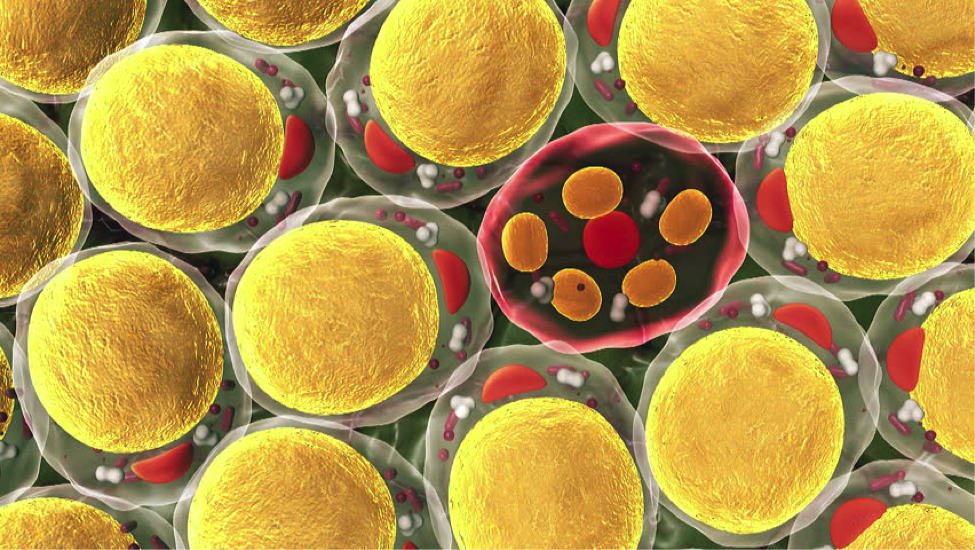What is fat?
Fats are one of the nutrients that we need to consume in order to survive. Fats have a variety of beneficial functions in our bodies, such as providing us with energy, helping with the absorption of certain vitamins, and helping to protect our organs. If we eat excess fat, it gets stored in our adipose or fat tissue as triglycerides (they are named triglycerides because these molecules are made of one glycerol molecule and three fatty acid molecules).
There are several times throughout a person’s life when the number of fat cells increases; mainly this process occur during infancy (between the ages of 0 and 2) and during puberty. However, the number of fat cells may also increase during adulthood.
A typical adult has between 10 and 30 billion fat cells. When we gain weight, the size of these fat cells will increase; this type of fat growth is more common in adults and is called hypertrophy. Although it is less common in adults, weight gain can also occur through an increase in the number of fat cells. This type of fat growth, called hyperplasia, occurs when the existing fat cells are filled to capacity with existing fat. New cells are required to accommodate the excess fat.
What happens to your body fat when you lose weight?
During weight loss, there is an energy deficit (you are expending more calories than you are taking in). To make up for this deficit, your body goes into its fat-burning mode, called ketosis, and begins to metabolize its energy stores (your fat cells) to get more energy. The triglycerides within the fat cells are then broken down (which causes the fat cells to shrink) and transported to the tissues that need the extra energy. At these tissues, the fatty acids of the triglyceride go through a series of reactions to help create a form of energy that our body can utilize, called ATP. The waste products of these reactions are carbon dioxide and water; they are subsequently exhaled from your lungs, lost through sweat, and excreted in urine. About 80 % of fat is turned into carbon dioxide and exhaled through your lungs; so most of the fat you lose is lost through breathing! Ultimately, it takes an energy deficiency of about 3500 calories to lose one pound of fat.
If there is a continuous energy deficit, your triglycerides will continue to be broken down and your fat cells will continue to shrink. However, the fat cells will not disappear. While new fat cells can be created through weight gain, fat cells cannot be destroyed through weight loss. Additionally, we cannot choose the specific areas of our body where fat loss will occur. When we lose weight, we lose weight proportionally throughout our body. Specifically, this means that we cannot change our body shape; we can only reduce our body size.

 hover background
hover background